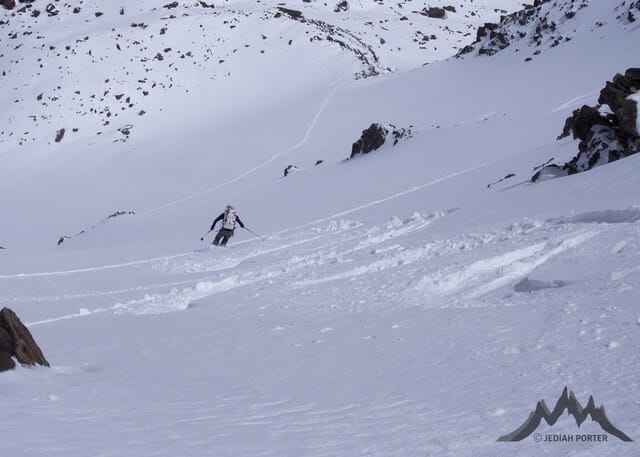Before Uphill Athlete, I’d been engaged in structured training—mostly self-coached—for mountain and endurance sports for many years. I was a runner and cyclist through high school and college, then got into skiing and climbing toward the end of school and did those almost exclusively. About seven years ago, my daughter, who was a competitive Nordic skier, took up cycling as part of her dryland training, and I got back into road biking with her and started racing again. My main winter thing was still skiing, so my training revolved around biking and skiing.
A couple years ago I wanted to get back into the mountains and off the roads, so I started doing some mountain running, climbing, and scrambling. I skimo raced in winter. It began to seem like maybe I could pull of a big high-altitude ski mountaineering objective—the stretch goal I’d entertained for years.
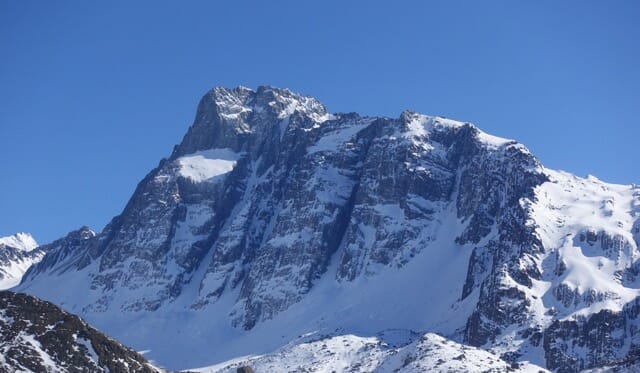
I read Training for the New Alpinism and tried to apply some of what I’d learned. Then I attended an Uphill Athlete workshop in Boulder in November 2016; impressed, I hired them to coach me. I sensed that the individualized attention would be well worth it, and it clearly has. I’ve been working with Coach Sam Naney for almost a year now.
Back when I trained myself, I read a lot, tried to stay up on new information, and experimented with different things. I was getting maybe 80 to 85 percent right. Sam has helped me chip away at that next 15 to 20 percent, which is huge, because when it comes to training, the higher you get on the percentage scale, the more difficult it becomes to reach the next level of gains. If you graph it, it hockey-sticks. It’s not linear. I wasn’t going to get there my own.
I’m an inquisitive person, a lifelong learner. Part of what I enjoy about training is what I learn about myself and my capacities. I’m interested in the theory behind it. But I have a full-time job—I’m an in-house lawyer for a company—and I travel a fair amount for work, so there isn’t always time for me to geek out on training. The beauty of being coached is that when I do have time, I can talk with Sam about why he programmed something a certain way and what we’re expecting to get out of it. He’s been great about explaining those things to me.
On the other hand, if I’m jammed at work or otherwise jammed in life and don’t have the time for that, I can just look at TrainingPeaks and go into mindless mode. I don’t have to ask why, because Sam’s told me what to do and I can trust the process—that if I do it, I’m going to get better. Whereas if I was self-coaching, it would all be on me. If I don’t have the time to think about the day’s workout, I don’t pay the price for it. I see what I’m supposed to do, and I go do it.
The strength training that Sam has set up for me, the way he’s programmed it, is something I never would have figured out on my own. The workouts are geared toward functional strength, specific to what I’m trying to accomplish. There are all these subtleties. For example, we recently did an eight-week block of a customized muscular endurance routine for both the uphill and downhill components of my skiing. I think the fear for classic masters-aged endurance athletes—I’m 56—is that strength training will compromise endurance. That doesn’t have to be the case, and in fact they can be complementary. The results have been great.
When I came into this, cycling was my exclusive thing in the non-ski season. But we had to cut it out, because what I’m training for is load-bearing. Sam carefully managed my transition to running, hiking, and ski-striding, and running is now a staple workout. I love running in the mountains around Truckee and Lake Tahoe, where I live.
I’m able to work from home a fair amount, but with all my travel I’m not immune to climbing skyscraper stairwells. I can obviously run anywhere, and we can do the muscular endurance stuff in the gym, but some of the uphill training is less obvious. Again, that’s another advantage of having Sam as my coach: when my schedule changes without a lot of notice, which it does from time to time, I can let him know and he’ll modify the plan to make the best of my location.
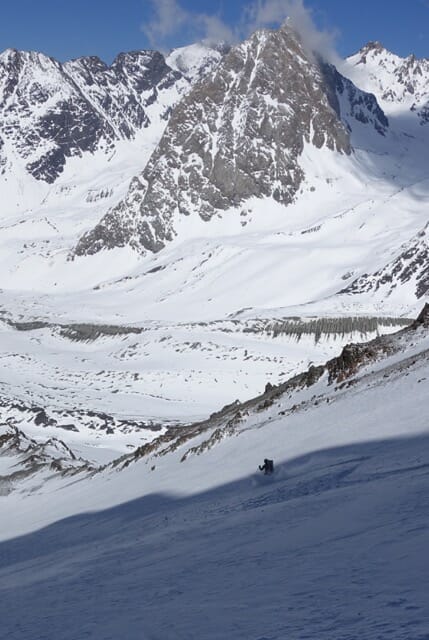
The level of communication with Sam is amazing. I’m pretty big on the routine of commenting on my workouts in TrainingPeaks: I self-grade every workout, give a brief (sometimes not-so-brief) commentary, and ask questions. Sam is great about responding. So we have a daily interaction via TrainingPeaks, and then we text every 10 days or so, usually when I need to let him know about a change in my location based on travel. And then we talk on the phone every four to five weeks. I get the feeling that if I wanted to text or talk more, he’d be available for that. But we’ve found a cadence that works well for both of us.
When I started up with Sam last April, the long-term plan was to work toward that big high-altitude ski mountaineering objective. We set complementary goals along the way—other smaller objectives to build up to the big one—and trained for those. The first of these interim targets was a ski mountaineering trip in the High Sierra in May. Next up was the Broken Arrow Skyrace at Squaw Valley in June, and then in July I tackled a double ascent and ski descent of Mount Shasta in a day—two laps with about 13,000 feet of elevation gain.
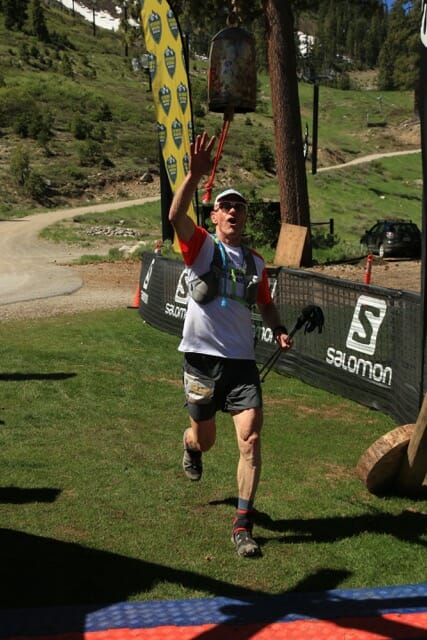
After Shasta, I trained specifically for a high-altitude ski mountaineering trip in Chile in early October. The bottom-line report back to Sam on that one was that I felt like I always had plenty of reserves in the tank. We didn’t push really hard on the mountain, but the packs were heavier than we thought they’d be and I acclimatized super well on a moderately aggressive schedule. The training doesn’t guarantee that by any means, but it helps to be in shape. It was confidence-inspiring.
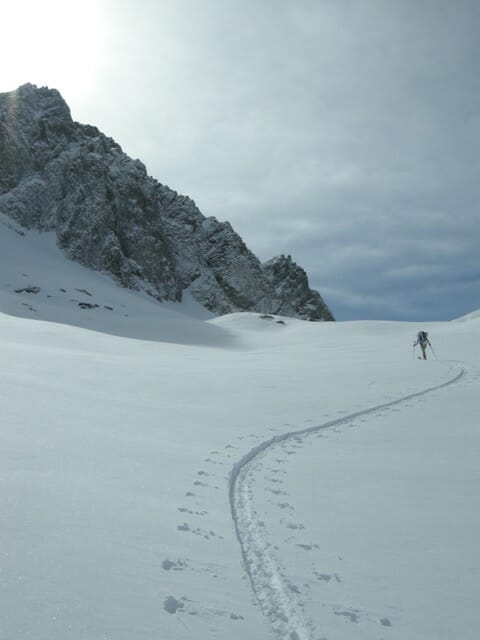
When I got home from Chile, Sam was on paternity leave. I worked with Scott Johnston for about five weeks there, and that was something else I was very impressed with: the seamlessness of that transition. Sam had briefed Scott very thoroughly on where I was, and then when Sam returned, it was a seamless transition back to working with him.
My big stretch objective was supposed to happen this fall, but I’ve had to put it off until next year due to work commitments. It’s something I’ve always wanted to do, and for a long time I thought I’d missed my window. When I started with Uphill Athlete, I asked Sam, Scott, and Steve House about the idea: is it a realistic stretch goal, or is it a you’re-fooling-yourself-dude pipe dream? I encouraged them to call BS on me, because I didn’t want to get invested in it emotionally or financially. They looked at my numbers and my volume, the training I’d been doing on my own, my Aerobic and Anaerobic Thresholds, and my previous high-altitude experience, and they told me it would be doable—hard, but doable. Their genuine engagement on that was another big reason I committed to the coaching.
Even though I’ve had to postpone my multiyear goal, I’m really looking forward to the upcoming skimo season—my first race season coming off almost a year of this very focused training and coaching. I feel stronger and fitter; I have no doubt I’ll see improvement.
-by Uphill Athlete Dave Riggs

